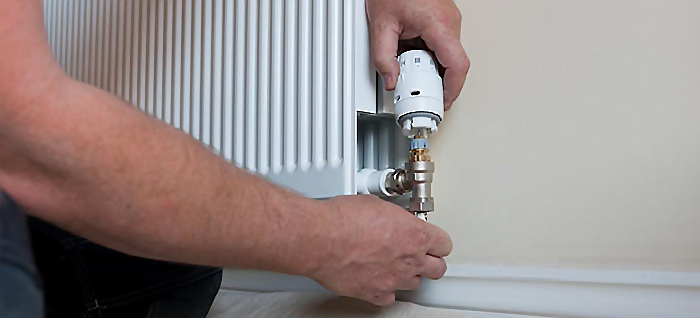The Science of Temperature Control in Radiators
At the core of thermostatic radiator valve uk operation lies a reaction to environmental heat changes. The TRV contains a thermal sensor that responds by expanding or contracting depending on air temperature. This response alters the valve opening and, consequently, the volume of hot water entering the radiator.
This process is a physical embodiment of heat-driven mechanical actuation, requiring no external electrical power and making it ideal for autonomous room regulation.
Mechanical Actuation Based on Heat Energy
The valve’s operation relies on a predictable response from the sensor medium. The expansion applies force on a spring or piston mechanism, translating into controlled movement of the valve stem. This conversion from thermal energy to mechanical work is a key aspect of thermal-mechanical systems in HVAC engineering.
Understanding the Thermodynamic Foundation of TRVs
A thermostatic radiator valve (TRV) operates based on the physical principle of thermal expansion. The sensor element inside the TRV—typically a wax or liquid capsule—reacts to changes in ambient air temperature. This reaction drives a mechanical movement that opens or closes the valve, thus regulating the flow of hot water through the radiator.
The expanding substance pushes a pin connected to the valve body. This mechanical movement is proportional to the detected temperature change, making the TRV a passive proportional control device.
Dynamic Room-Level Regulation
Because each TRV responds only to its immediate environment, rooms can be independently controlled. This segmentation of control enhances comfort and energy savings, especially in multi-room homes or buildings with uneven heat gain or loss.
Hydraulic Considerations in System Design
When TRVs close partially or fully, they increase resistance in their respective branches of the heating system. As this occurs across multiple radiators, the central pump encounters varying load conditions, which can lead to pressure surges or reduced flow elsewhere.
To prevent system inefficiencies, engineers must balance the entire hydraulic circuit. This may involve installing an automatic bypass valve or using variable-speed pumps that adapt to real-time system demand.
Energy Conservation Through Thermostat Valve Theory
TRVs are part of a broader thermal control strategy aimed at minimizing energy waste. By reducing the flow in low-demand areas, they prevent unnecessary boiler firing, reducing overall system load.
The application of entropy minimization and exergy optimization—concepts from advanced thermodynamics—demonstrates the theoretical soundness of TRVs in lowering carbon emissions and improving heating performance.
Sunlion Sanitary’s Contribution to Smart Thermal Management
Sunlion Sanitary produces thermostatic radiator valve uk engineered with precision to support UK home energy goals. Their models feature fast-reacting thermal sensors, smooth mechanical movement, and reliable operation over a wide temperature range.
These TRVs integrate easily with both modern smart thermostats and traditional boiler systems, offering flexibility and technical robustness to homeowners and installers alike.
Proportional Control in Heating Systems
Proportional control means the device continuously adjusts its output based on the difference between actual room temperature and a pre-set value. This forms a feedback loop, which is a fundamental concept in control theory. Unlike on-off thermostats, a TRV provides a gradual response, reducing thermal overshoot and improving comfort.
Closed-Loop Regulation and Comfort Balance
In a closed-loop heating system, each TRV works independently. This allows for localized control of room temperature, which contributes to energy conservation. The valve minimizes flow in rooms that reach the target temperature while maintaining flow in colder zones.
Hydraulic Behavior of TRVs in Central Heating
TRVs influence water distribution across radiators. When multiple TRVs are installed in a system, they introduce variable resistance to the water flow. This leads to dynamic pressure changes and potential imbalance if not properly engineered.
Proper system design with adjustable bypass valves or pressure-differential valves is essential to maintain hydraulic balance when TRVs restrict water flow.
At the core of thermostatic radiator valve uk operation lies a reaction to environmental heat changes. The TRV contains a thermal sensor that responds by expanding or contracting depending on air temperature. This response alters the valve opening and, consequently, the volume of hot water entering the radiator.
This process is a physical embodiment of heat-driven mechanical actuation, requiring no external electrical power and making it ideal for autonomous room regulation.
Thermodynamic Efficiency and Exergy
From a theoretical efficiency standpoint, TRVs reduce exergy loss by ensuring that heat energy is not wasted in unoccupied or already-warm spaces. They align well with condensing boiler operation, which requires low return temperatures for maximum condensation efficiency.
By managing room-specific demand, TRVs minimize overall heat generation and fuel usage, which directly supports sustainability targets.
Conclusion
Thermostatic radiator valves are not just mechanical accessories but are underpinned by critical scientific theories in temperature control, fluid dynamics, and energy conservation. In the UK, their adoption represents both a practical and theoretical advancement in domestic heating. Sunlion Sanitary continues to deliver TRVs that reflect engineering excellence and scientific integrity.
Thermostatic radiator valves represent a sophisticated application of physics and engineering. Their theoretical foundation in thermodynamics and control systems makes them critical for efficient residential heating in the UK. With trusted brands like Sunlion Sanitary, homeowners can achieve optimal comfort with scientifically designed and practically effective TRVs.



